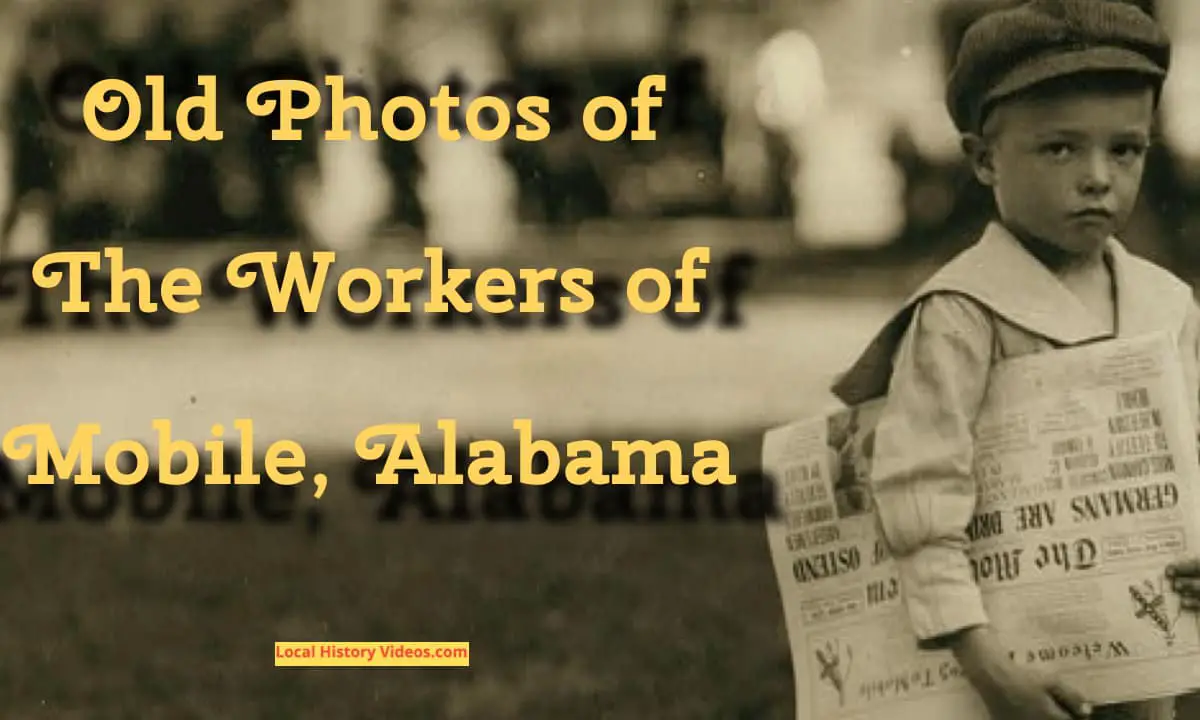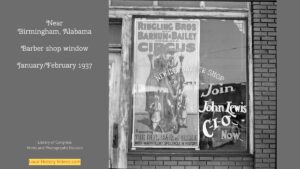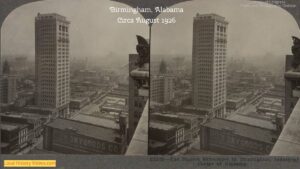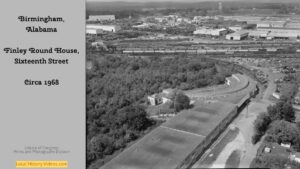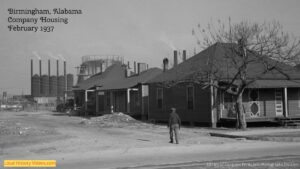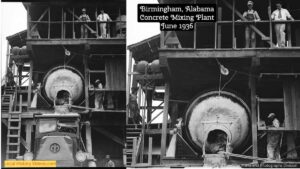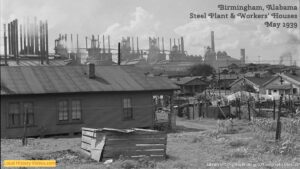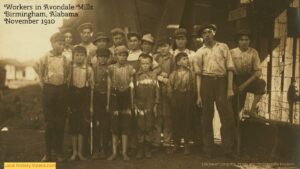Glimpse history through old photos of adults and children at work in Mobile, Alabama, USA.
The Oyster Barge
The oysters in Mobile Bay was one of many important industries in the area at the beginning of the twentieth century.
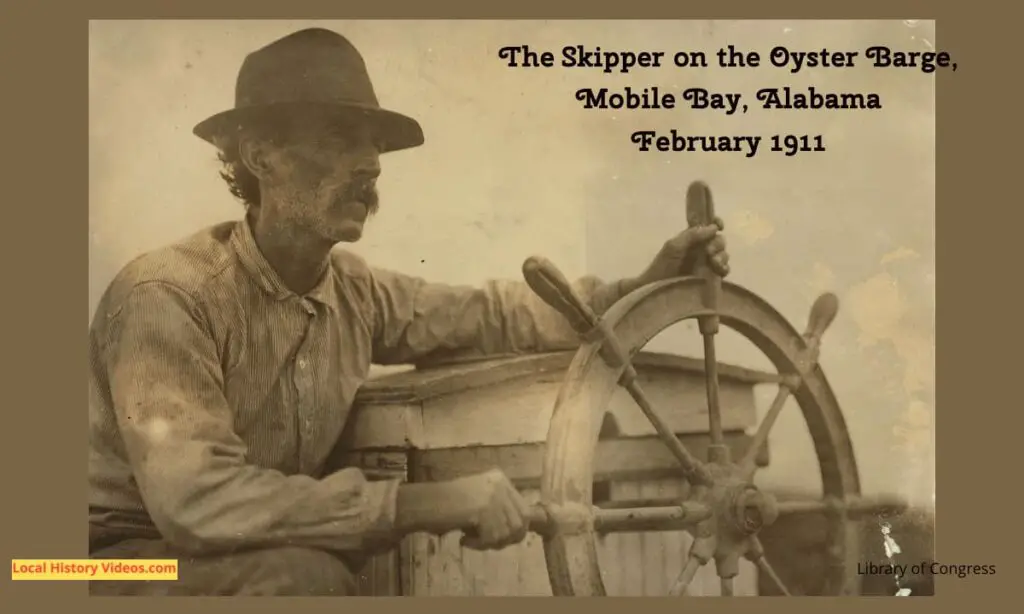
Newsies
No matter the weather, young news boys were out in the street for many hours selling their papers for little money. And being barefoot was common, showing how desperately poor their families were.
Some of the newsboys were very young. 7-year-old Ferris, pictured below in 1914, was unable to work out the change for the photographer when he purchased a paper.








Delivery Boys
Some delivery boys travelled about on bicycles, while others carried large bundles around.


Messenger Boys
Messenger boys worked long hours for low pay.
While some had reputable employers and some degree of adult supervision, it was not unusual for children to be working late at night and in deeply unsavoury locations with no one to keep them safe.




Hammel Department Stores
In April 1865, Leopold Hammel finally arrived in Mobile, where he joined his cousin who had already settled there. The 17-year-old’s journey from Bavaria to New York had gone smoothly enough, but the American Civil War had delayed the next stage by several months.
By the age of 25, he was starting the business which was to become L. Hammel & Co, and over the next few decades the business flourished.
The Hammel Department Store remained within full or partial family ownership even after Leopold Hammel’s sudden death in 1914 from an apparent heart attack, the merger with the neighboring Adam Glass & Co in 1945, and the purchase by P. N. Hirsch Shoe Co. in 1965.
The New Orleans department store D. H. Holmes purchased Hammel’s in 1975, and closed the Royal Street store.
Five years later the bulldozers tore down the building which, upon its opening in 1902, had been described by a reporter as a “building which in architecture — exterior and interior — has few, if any, equals in the South.”


Reiss Department Store
Reiss, a fourth-generation custom clothier, has proudly specialized in creating gentlemen’s wardrobes since its inception in 1899. Founded by Jacob Reiss, Sr. in Mobile, Alabama, the Reiss Department Store served loyal customers across multiple generations.
Since relocating to Birmingham, Alabama, in 1970, the company has successfully catered to the diverse wardrobe needs of its clients, serving them in various settings from boardrooms to golf courses. This legacy of quality and craftsmanship positions the company as a leader in the custom clothing sector, with a commitment to maintaining the highest standards of service and product excellence.
It was noted in 1914 that Mr Reiss did not agree with the employment of children, and his shop workers in these photos are clearly all adults. However, Willie Roberts was just 11 years old. He may have been a messenger boy or possibly delivering small items.








Gafer Department Store
Based in Mobile, Alabama, the chain of Gafer’s Department Stores operated from 1879 until 1998.
C.J. Gayfer founded his first store in Mobile in 1879, having moved here after the American Civil War from Southwold, in Suffolk, England. By the time he died in 1915, he employed 150 people.
Gayfer’s expanded under later ownership, into a chain of department stores boasting 18 stores in 1981.
Dillard’s purchased the chain in 1998. The name Gayfer’s disappeared as the new owners either closed stores or renamed them under the Dillar’s brand.
The 9 year-old girl photographed in 1914 lived with her siblings and a working one-armed father. She had relatively comfortable relatives, leading the investigator to conclude that the girl’s employment was a matter of choice rather than critical necessity.

Mobile Cotton Mills
In 1914, a number of children worked in the Mobile Cotton Mills. Some of them were barefoot.
The cotton mills had been established here because of the nearby docks, allowing easy supply lines for import of raw materials and export of finished products.














Cargo Loaders
In 1937, photos were taken of men loading large bunches of bananas into ventilated refrigeration rail trucks for long distance distribution.




More about Alabama
- Labor Rights in Old Birmingham, AlabamaThe labor movement in Birmingham, Alabama, has been a significant part of the city’s industrial history, characterized by a struggle for workers’ rights, labor organization, and social justice.
- Birmingham, Alabama in the 1930sStep back in time to 1930s Birmingham, Alabama, a vibrant city struggling with the impact of the Great Depresssion.
- Birmingham, Alabama in 1926By 1926, Birmingham, Ala., was at the height of its industrialization and a dynamic, modern place to be.
- The Finley Roundhouse at Birmingham, AlabamaThe Finley Roundhouse was an important part of railway history in Birmingham, Alabama. Abandoned and derelict, its roof was destroyed by a hurricane.
- Company Housing in Old Birmingham, AlabamaAs workers migrated into the expanding city of Birmingham, Alabama the company houses were in high demand.
- Making Concrete in Old Birmingham, AlabamaConcrete was an essential part of growing the city and industries of Birmingham, Alabama.
- The Steel Industry in Birmingham, AlabamaDiscover why steel was such an important part of the local economy in Birmingham, Alabama, USA.
- Old Photos of the Workers of Mobile, AlabamaGlimpse history through old photos of adults and children at work in Mobile, Alabama, USA. The Oyster Barge The oysters in Mobile Bay was one of many important industries in the area at the beginning of the twentieth century. Newsies No matter the weather, young news boys were out in the street for many hours… Read more: Old Photos of the Workers of Mobile, Alabama
- The Child Workers of Birmingham, AlabamaDiscover the haunting old photos of children who worked in the factories, eateries, messaging and transportation industries of Birmingham, Alabama.
- Old Images of Mobile, AlabamaGlimpse history through old images of Mobile, in Alabama, USA.

